Brazil: Interesting, Exotic and a ‘Feel Good’ Sailing Adventure
Sailing in Brazilian waters requires more planning and preparation than in some other sailing areas. Currents, distances between anchorages and an almost non-existent sailing infrastructure may be daunting for some, but for Austrian sailors Gerlinde and Josef Nöst it provided for some wonderful experiences and memories, as they outline in this report.
Published 1 year ago
Our thanks to BRally Amazon and Gerlinde and Josef Nöst for sharing this report.
Sailing in Brazil cannot be compared to the Mediterranean or the Caribbean. Planning and preparation are more important than in some other sailing areas. Currents along the coast run up to 4 knots (from east to northeast), tidal range in the rivers is up to 5 meters with currents up to 5 knots. The distances from anchorage to anchorage are greater; anchorages as well as harbors are few and far between and mostly in rivers. Sailing infrastructure is almost completely absent, as are other sailing boats. Attractive? Very much so, for us!
Fernando de Noronha:
Land in sight! Fernando de Noronha – our gateway to Brazil and South America. 1524 miles and that magic line called the Equator are now behind us, as is the small country of Gambia in West Africa, from which we departed 15 and a half days ago. Hundreds of spinner dolphins now cordially welcome us into the bay of Fernando de Noronha, as do the people of the island.
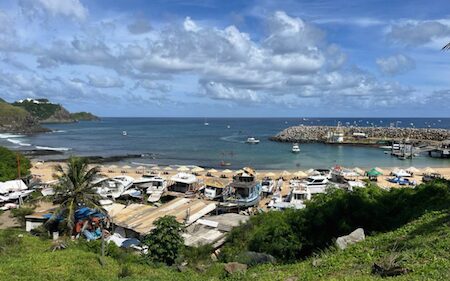

This small archipelago, located 190 miles off the Brazilian coast, impresses us with its friendliness, openness, simplicity and helpfulness, as well as its cleanliness (their slogan is “no plastic”) and its lush greenery.
The administrative procedures are also refreshingly simple and simply nice. Is this the Brazilian way of life? If so, we like it! Language barrier? Not at all! The “thumbs-up” sign, which is universally understood, is often and happily used here, with broad smiles on their faces.
The national language is Portuguese and nothing else. After all, Brazil is (almost) as big as a continent, (nearly as large as Europe) and even if Fernando is a tourist island, mainly Brazilians visit it!
Cabedelo:
Marina Jacaré, at Cabedelo on the Brazilian mainland, is on the river Paraiba Norte and is only a two days sail from Fernando de Noronha. Jacare is like a small European oasis.
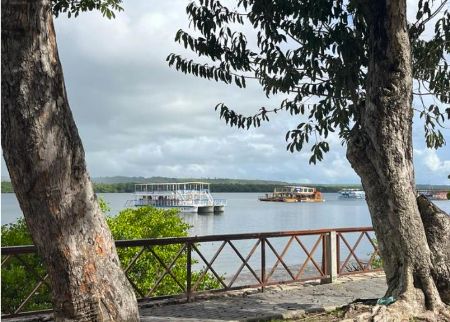

Here, Vitamine will be out of the water for a few months, well cared for by Nikolai, the French operator of the marina, while we spend some months visiting our home, family and friends in Austria. Nikolai is also an invaluable, time and energy-saving asset, helping us navigate the often unnerving administrative procedures.
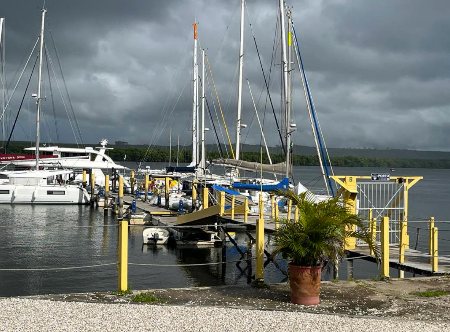

Lencois:
On our next northbound leg we see many fishing boats working near the coast. But taking the 40m depth line as a boundary their fishing area extends far out into the sea. Therefore, we follow the route of the commercial ships and stay approximately 50 miles off the coast, with much less traffic.
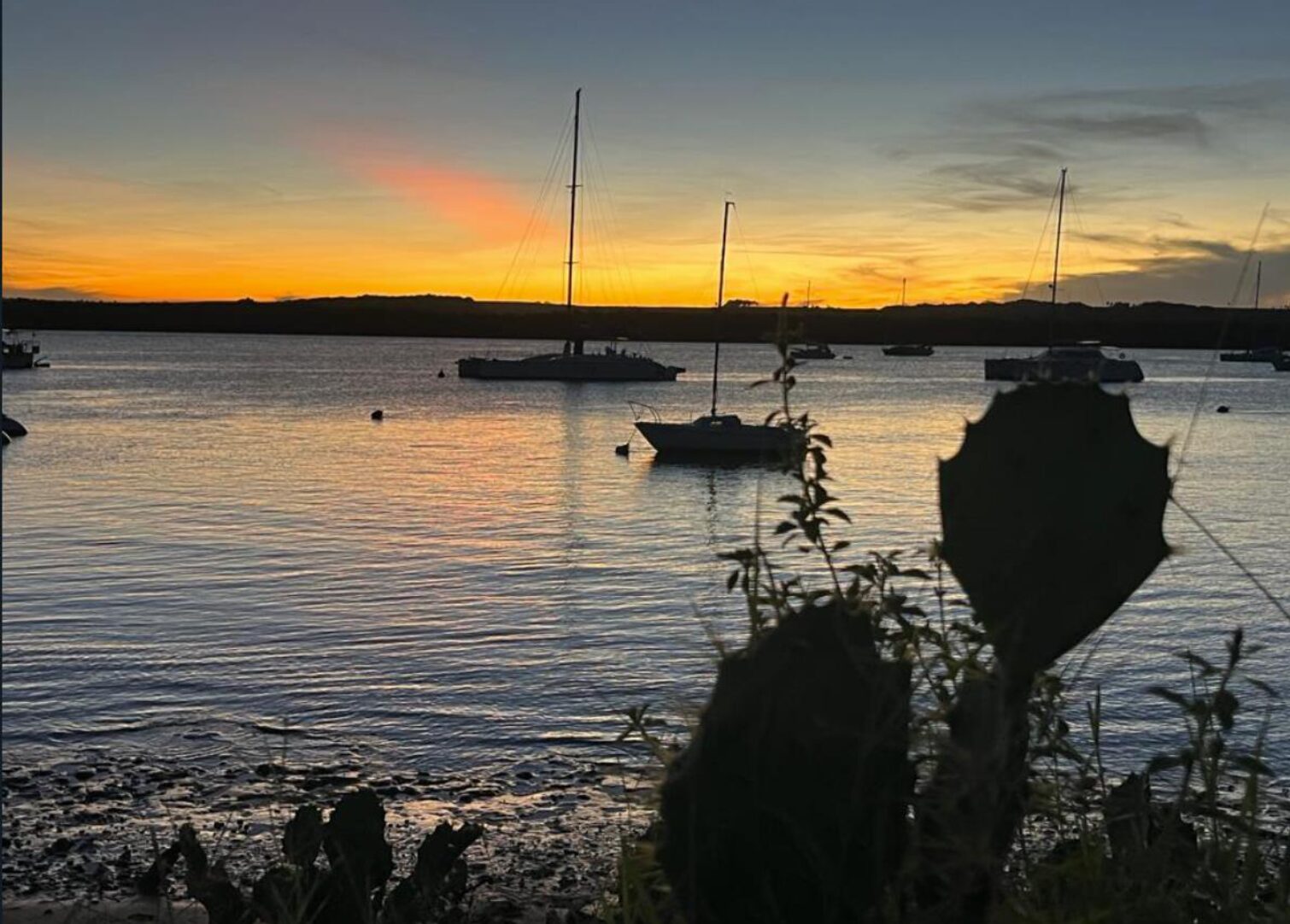

Here, a powerful and beneficial current of up to 4 knots, as well as favorable winds, carry us towards our next destination: the island of Lencois. After about 250 miles, a unique paradise awaits us on Lencois – a dune landscape extraordinaire! With the additional bonus of being completely undeveloped for tourism! Wonderful for hikes on the dunes, as well as for just unwinding in a pristine, unspoiled landscape.
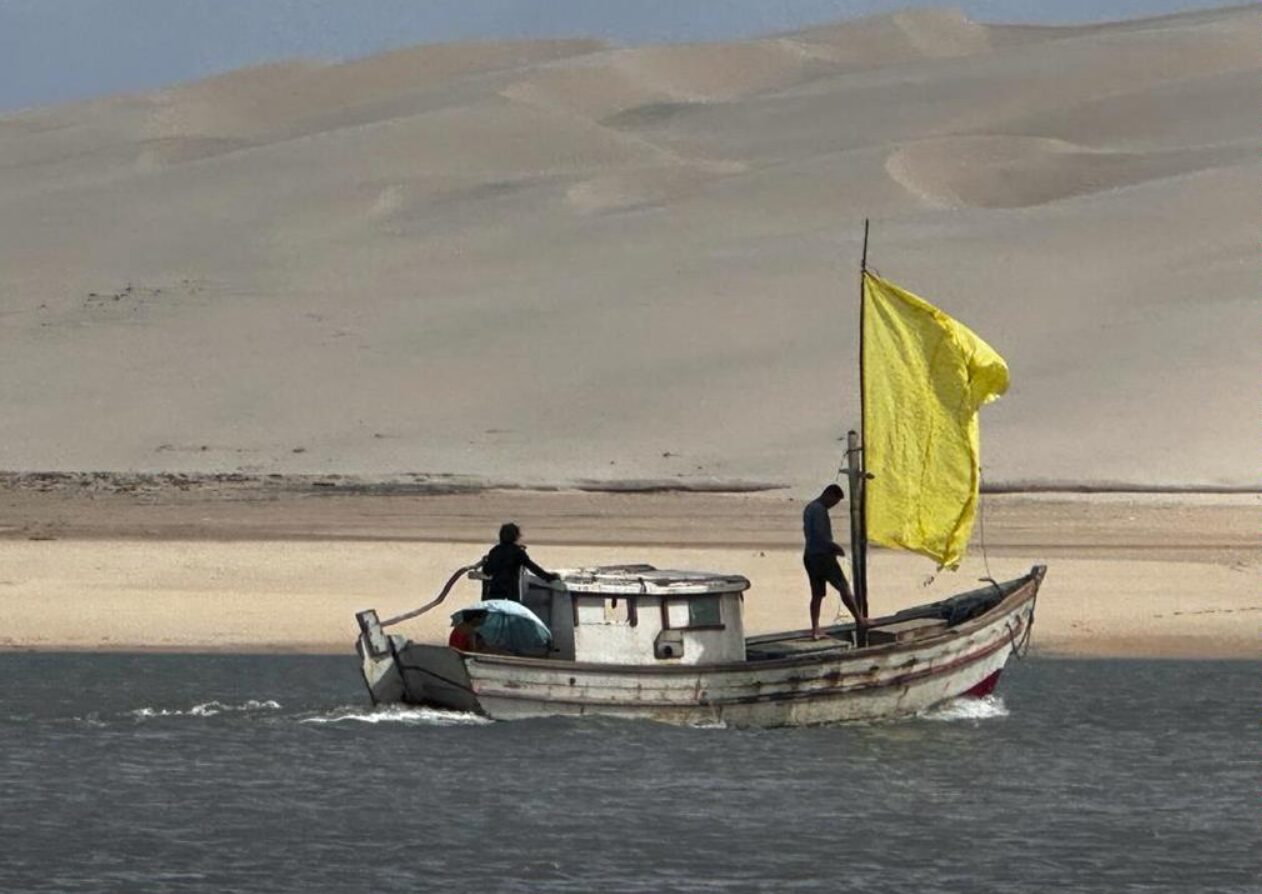

The entrance to the anchorage on the edge of the dunes requires some planning; the current is up to 5 knots and the tidal range is up to 5 meters! Take this into account when entering and it’s easy going.
Lencois is criss-crossed by canals and the large, elongated anchorage inside offers the charm of a river, but, due to the sand and mud swirls generated by the powerful tides, the water is a corresponding green-brown color. Anchors are carried out from the boat one after the other, or diagonally offset, in a depth of around 5 – 10 meters. At low tide, you have the interesting and unusual feeling that the beach is only a short hop from the boat.
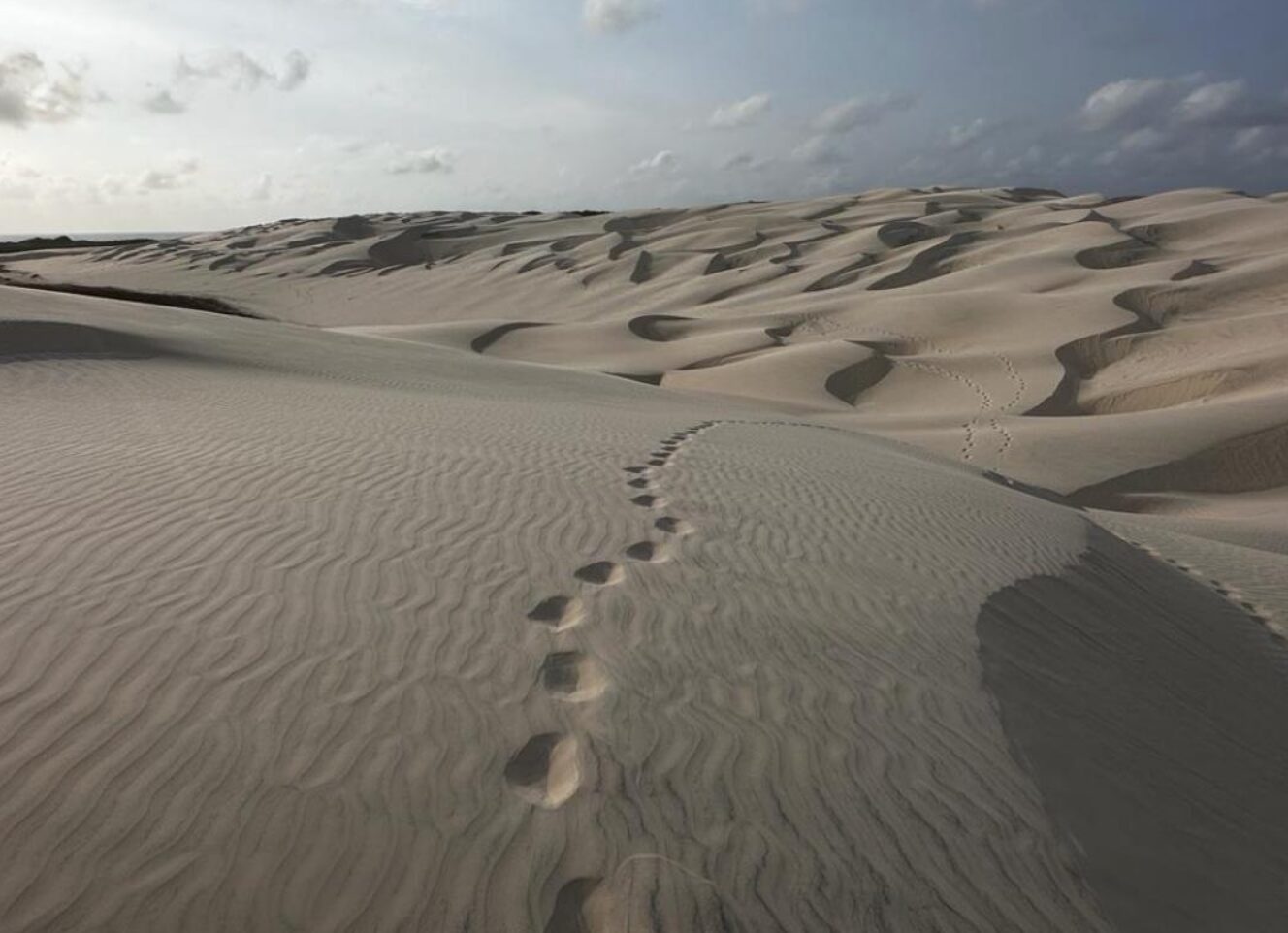

Laura, a lively Brazilian woman, runs one of the small shops with only basic groceries; she also likes to cook on request. Credit cards? Not a chance! Drinking water? It’s fetched from a well on the edge of the dunes. Goats, donkeys and zebus share the grazing areas at will and can therefore be found on the seagrass meadows directly in front of the small village at low tide, or in the pasture areas in the interior of the island, or in the bushes along the dunes (or sometimes “in” the dunes).
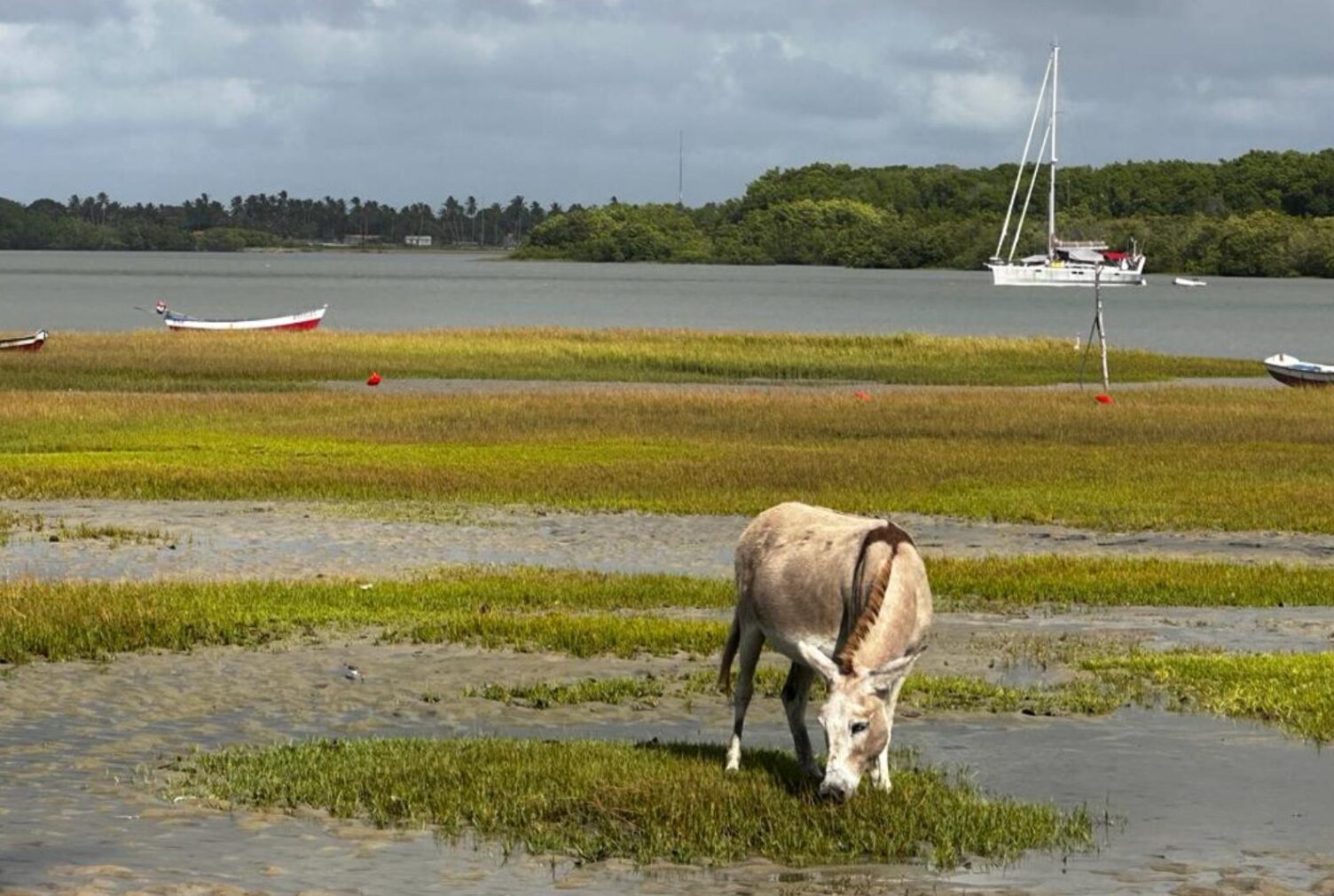

The Red Ibis, found only in the northernmost regions of South America is also found foraging here. Fancy 4-legged company? Any of the friendly, free-roaming dogs are ready for a walk by your side.
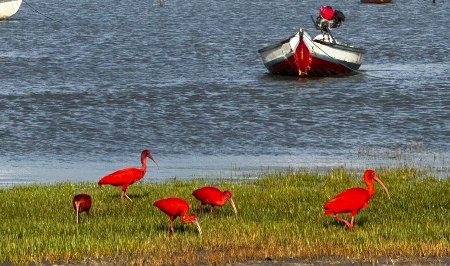

The myth of the Amazon is calling!
The dimensions of this gigantic river and rainforest ecosystem are legendary, as is its exotic diversity of fauna and flora. And its importance for our global climate is immeasurable.
It stretches across nine South American countries with an incredible 6,400 kilometres of river and feeds the largest contiguous rainforest area on earth. This jewel of the world’s nature is right in front of us!
The BRally:
Once a year there is the well-organized yachting expedition that explores the first 700 miles of the Amazon, known as the “Brazilian Rally Amazone”. The rally covers the area from the Amazon Delta to the city of Manaus and participating yachts from all over the world get to see first-hand what life on this mighty river is like.
Going our own way:
Instead of taking part in the rally, we decided to explore the Amazon Delta on our own, by circumnavigating Marajo Island. After leaving the island of Lencois and 268 leisurely miles of sailing, our anchor rattles into the muddy bottom of the Amazon delta for the first time. We anchor in front of Soure, a town with a population of around 25,000 on the Rio Paracauari, which is an arm of the larger Rio Para.
After an interesting day of sightseeing around Soure and only one night at anchor, we quickly take flight. In our imagination this town cannot be reconciled with the wild Amazon; it’s simply not what we’re looking for!
The Rio Para, a tributary of the Amazon Delta, has an estuary that is 30 miles wide; closer to Japiim Grande it is still 8 miles wide! In between these estuaries, there are a pleasant 100 miles (mostly under sail) and two anchorages for the night. Although threatened with extinction, we often saw the rare pink Amazon River dolphins quietly going on their way. We heard their calls and clicks more often than seeing them and their calls reminded us of the snorting of a horse.
Japiim Grande:
Four eventful days in Japiim Grande followed. We were warmly welcomed by Claudia and her entire large Ribeirinho family! Her sons took us for a river journey in one of their typical “rabudos”. The rabudos are narrow, long wooden boats with lawnmower engines mounted on a long shaft, and are beautifully painted in bright colors.
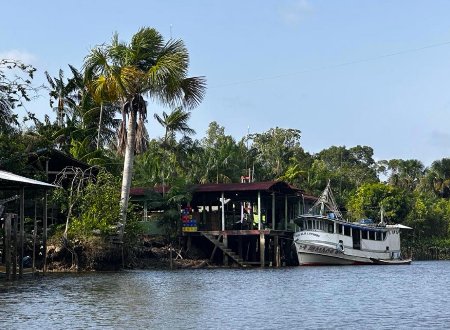

We visited the Acai (the “black gold” of the region) and Palm Heart harvesting areas, where they gathered coconuts, mangoes and cocoa fruits fresh from the trees for us to sample; they also showed us Cinnamon trees, while we marveled at their exotic homeland.
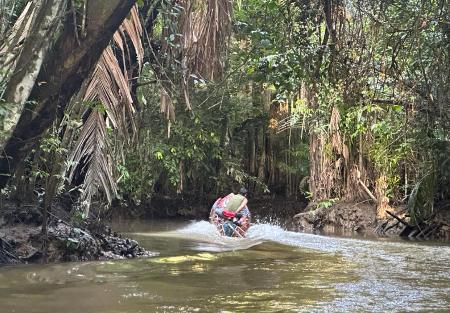

Next up was a church celebration and a local school visit. We enjoyed a traditional, festive meal with the family, with freshly squeezed acai juice (of course).
What a wonderful experience! As the very first foreign sailboat in Japiim Grande, Vitamine attracted a lot of attention. Thanks to an article in the local newspaper, she quickly became a popular excursion destination and photo opp for the entire well-populated region.
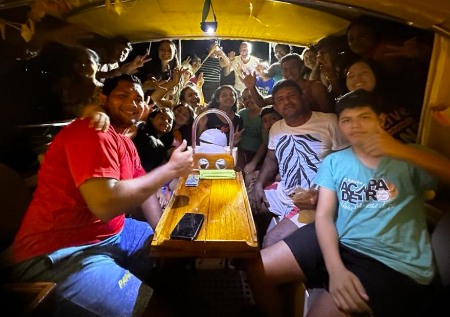

Breves:
After a touching and heartfelt farewell to the people of Japiim Grande, a 70 mile trip (under motor) takes us across the Furo Santa Maria to Breves, a town with over 50,000 inhabitants. We anchor in front of two petrol stations; refilling our fuel supplies is easy with canoe and “jerry cans”. A night in Breves is followed by a few days of immersing ourselves back in the Amazon.
Once again we can take a deep breath; we marvel and revel in the experience. With our inflatable canoe we explore small side channels that get narrower and narrower, while the rows of trees get closer and closer together; we finally find our way, winding around trunks jutting out of the water and ducking under low-hanging branches. We marveled at the diverse sounds of the forest, while enjoying the surprisingly pleasant temperatures, even at midday.
Many areas on land are muddy and virtually impassable on foot (now we know why Tarzan swings from trees with the help of Lianas vines), and yet, deep inside, we found a way to open land, where we suddenly find ourselves on the footsteps of lumberjacks, between their sawdust and cut planks. What a startling contrast to the pristine jungle.
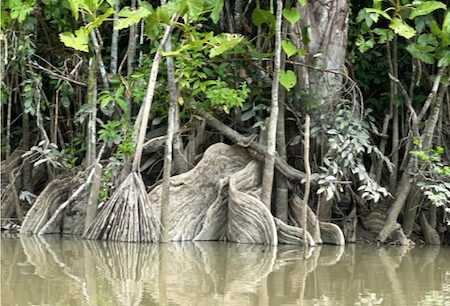

Amazon River:
We know we’re in paradise; please don’t tell us it’s time to leave. But in the end, the outside world prevails upon us: we’ve been in Brazil since the beginning of September, which means our three month visas are coming to an end. After a look at the weather apps, we resume our sailing journey towards the sea; the island of Marajo disappears in our wake and we sail into the real Amazon Delta – into the Rio Amazon at last!
The Rio Amazon and its hazards quickly take us by surprise. The maps of the main river are significantly worse than in the river Para and the small rivers that have carried Vitamine until now. Perhaps this is because the Rio Amazon is still up to 30 miles wide in this area (the delta measures up to a gigantic 130 miles), but these 30 miles are covered by many large
and small islands.
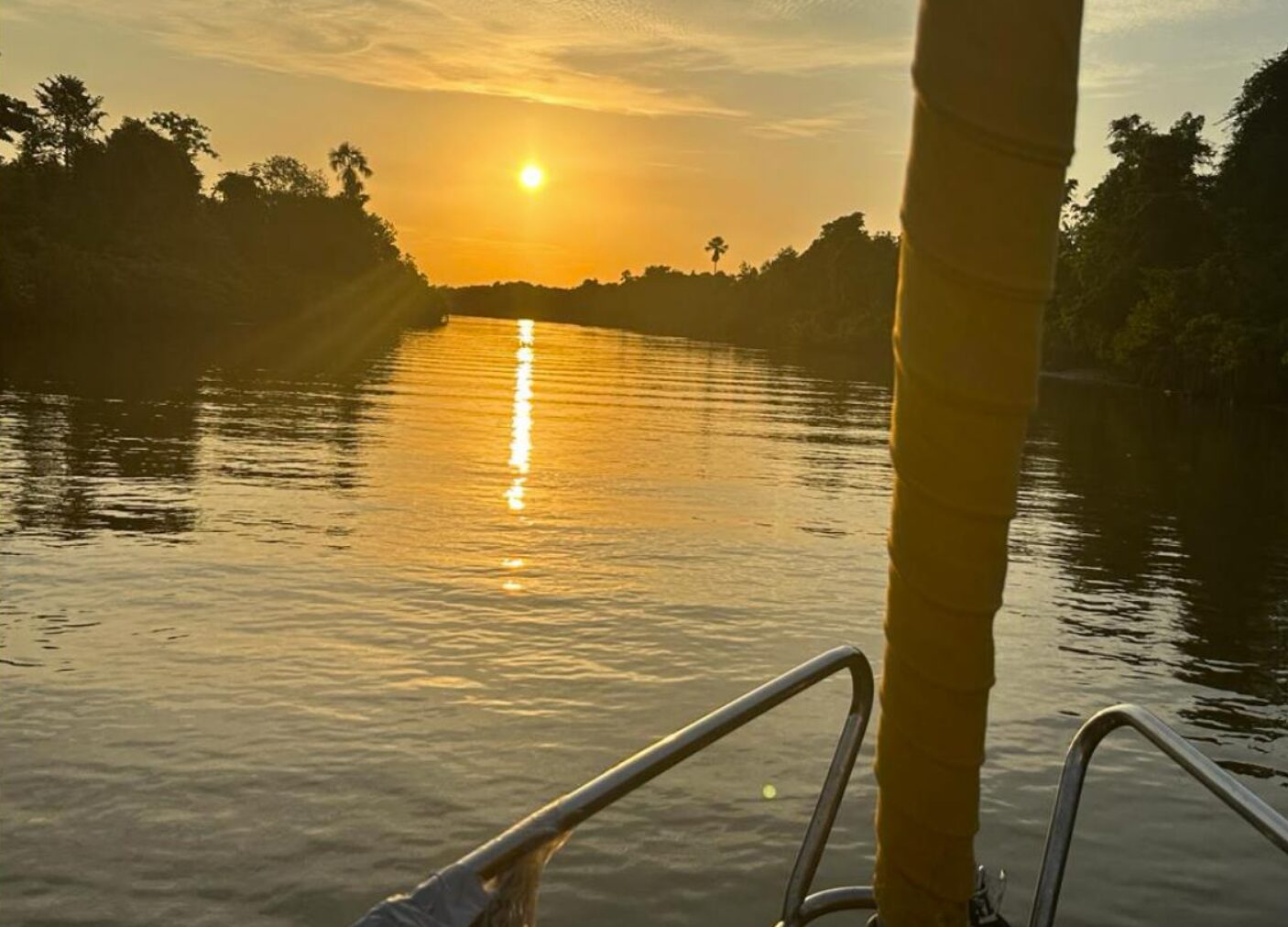

The maps are wrong, both in the location of land (in all directions) and in the water depth; looking at the depth gauge becomes mandatory. Twice we miss the famous “hand´s breadth of water under the keel” and we make contact with the ground – once under sail and once under engine.
Vitamine digs itself into the mud and becomes strangely stiff and immobile. After a few seconds, to a few minutes (which felt like hours) we “swim” again. Luckily, the ground is pure mud – so there was no damage, neither to Vitamine nor to her crew. In the glow of the full moon, our anchor drops for the last time in the Amazon, at the mouth of the Rio Acaituba.
Not so fast….!
Before dawn the next day, we set out to leave Brazil. But… the Rio Amazon doesn´t let us go sooooo easily. The tides change every 6-1/4 hours, which means that every six hours and 15 minutes Vitamine not only loses the helpful push of the ebbing current, but has to face a contrary current of five knots! This corresponds to her average speed.
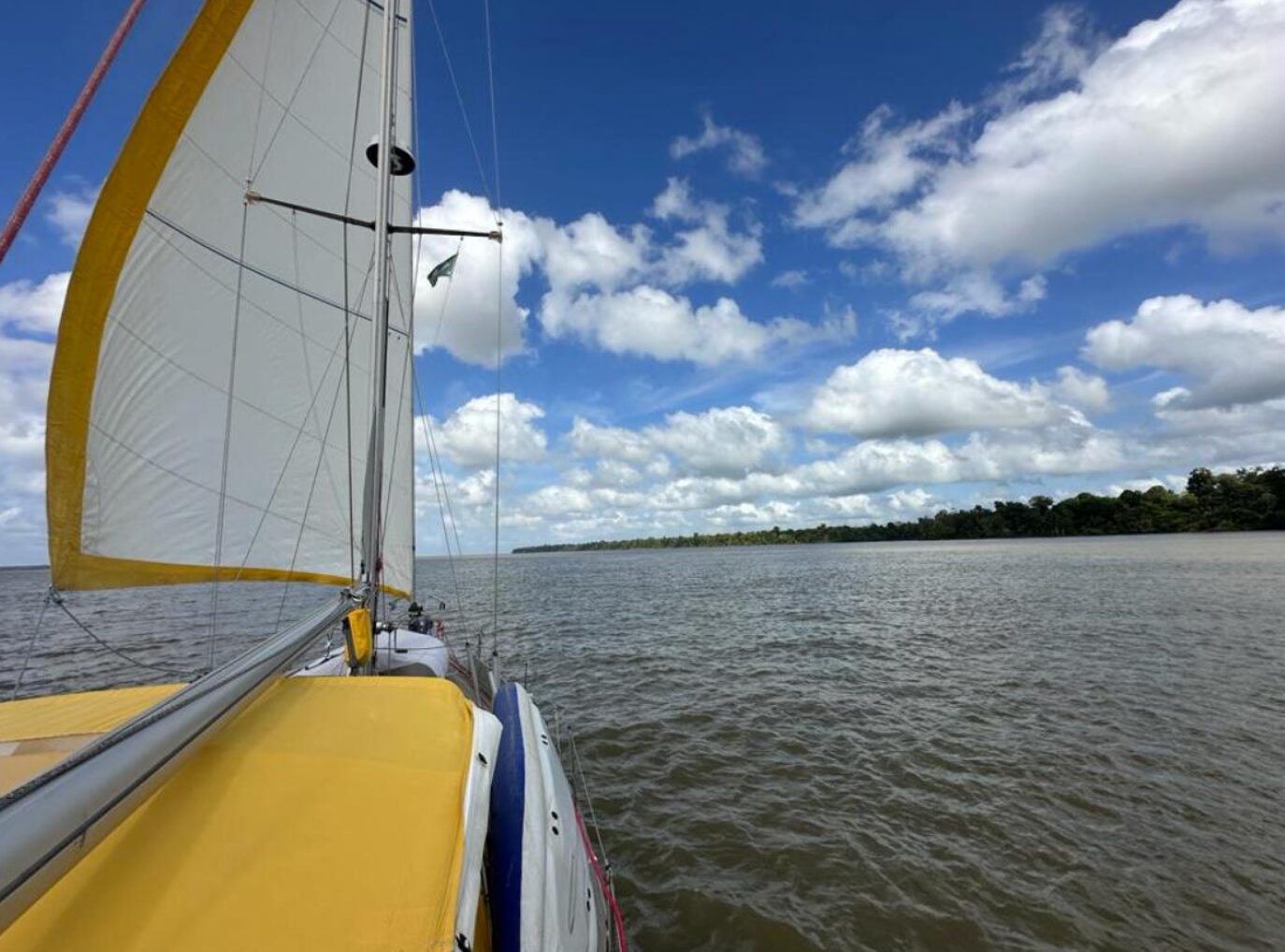

We focus on staying cool and accept the fact that in these 100 miles, as the crow flies, we make three three steps forward in the ebb and one step back in the flood. Finally, after 54 hours and 188 miles actually sailed, the time has come – the Amazon is behind us! We have left its sphere of influence, which extends up to 150 miles out to the sea. And all of this with only eight hours of motoring.
We are now in the perfect current that will carry us to Iles du Salut, in French Guiana!
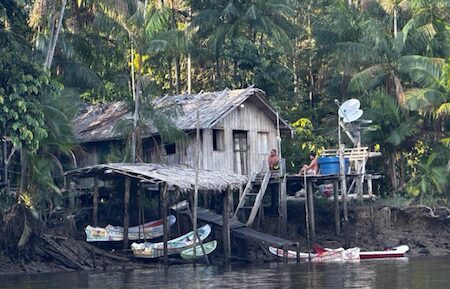

Assistance from the BRally and Taskforce:
Silvio Ramos (circumnavigator) is the main contact person and organisor for sailing matters in Brazil. He provided us with contacts and a lot of information and assistance on site.
Silvio runs the BRally (and BRally Amazon) and all the BRally volunteers (known as the Taskforce) – like Claudia, Laura and Nicolai – made our stay so much easier, interesting, diverse and beautiful! At many anchorages we made also nice contact with other very friendly locals. Only once did we leave an anchorage early because we didnt have a good feeling about it.
We are leaving Brazil with a multitude of wonderful experiences and memories – the people, the animals and the nature.
Gerlinde and Josef Nöst
SV Vitamine
Read more about Gerlinde and Josef’s sailing odyssey at SV Vitamine
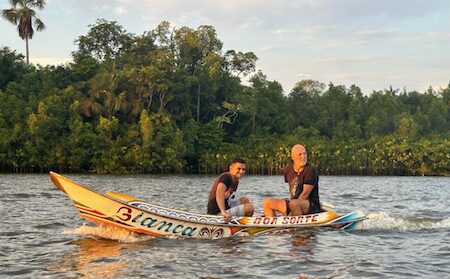

…………………………………
Reprinted with permission from Gerlinde and Josef of SV Vitamine and Silvio P. Ramos of the BRally.
…………………………………
About the Authors
Gerlinde and Josef Nöst began their sailing story with a honeymoon trip on a 10-meter-long motor sailor in 2012. For both of them, it was their very first contact with a sailboat. After a wonderful week on board as a couple, it was over for them – they had the sailing bug! In 2018, without really looking, they found the boat for their sailing adventures – a Hallberg-Rassy 382 and their adventure began.
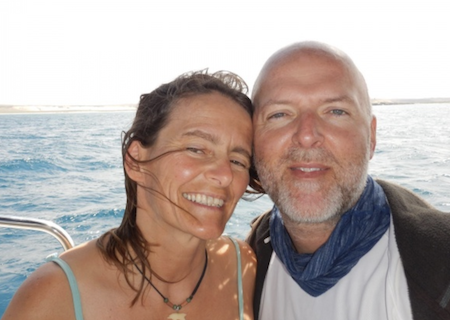

…………………………………
About the BRally
BRally is a “Sailing in Company” event in Brazil that promotes the inclusion of the Brazilian coast into the Circumnavigator´s routes. The organisers report that the number of foreign yachts visiting Brazil went from 15-20 boats in 2022, to over 160 in 2023. BRally starts every year around May, in Ubatuba and goes North. The Amazon portion of BRally starts in November in Soure, Marajó Island.
There is no charge to take part in the BRally. Find out more here.
…………………………………
The opinions expressed in this article are the author’s own and do not reflect the view of Noonsite.com or World Cruising.
…………………………………
Find out all news, reports, links and comments posted on Noonsite, plus cruising information from around the world, by subscribing to our FREE monthly newsletter. Go to https://www.noonsite.com/newsletter/.
Related to following destinations: Brazil, Eastern coast (north of Rio de Janeiro), Fernando de Noronha, Northern Coast (Brazil), Offshore Islands (Brazil)
Related to the following Cruising Resources: Atlantic Crossing, Circumnavigation, Circumnavigation, Off the Beaten Path, Rallies, Routing, South America

